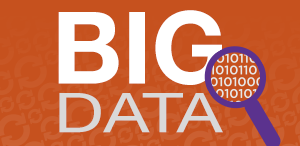 Predictive analytics and data science are hot right now. Well truth be told, ‘big data’ has been a buzzword for over 100 years. Finding a way to harness the volume, velocity and variety of data that is flowing into your business is as critical to innovation and transformation initiatives today, as it was then. However, big data analytics continues to be one of the most misunderstood (and misused) terms in today’s B2B landscape.
Predictive analytics and data science are hot right now. Well truth be told, ‘big data’ has been a buzzword for over 100 years. Finding a way to harness the volume, velocity and variety of data that is flowing into your business is as critical to innovation and transformation initiatives today, as it was then. However, big data analytics continues to be one of the most misunderstood (and misused) terms in today’s B2B landscape.
In the blog Steps to a Data-driven Revenue Lifecycle; we outlined the steps required to transform your data into ‘ RLM Ready Data’, aka actionable data that drives customer success and revenue growth. The second step in the process is to ‘galvanize’ data—meaning to make something actionable. For Customer Success leaders, this step requires you to analyze data to identify key value drivers, important milestones and leading churn or loyalty indicators. Arguably this is the most important, yet most difficult step in turning your oceans of customer data into valuable, practical and actionable business insights that will help your teams deliver value and expected customer outcomes.
In order to effectively work with your data scientists (if you have them) or your IT analytics teams, you need to understand the different types of big data analytics techniques and how to utilize them to get the actionable insights that you need to succeed.
Here are 5 types of big data analytics:
Prescriptive Analytics
The most valuable and most underused big data analytics technique, prescriptive analytics gives you a laser-like focus to answer a specific question. It helps to determine the best solution among a variety of choices, given the known parameters and suggests options for how to take advantage of a future opportunity or mitigate a future risk. It can also illustrate the implications of each decision to improve decision-making. Examples of prescriptive analytics for customer retention include next best action and next best offer analysis.
- Forward looking
- Focused on optimal decisions for future situations
- Simple rules to complex models that are applied on an automated or programmatic basis
- Discrete prediction of individual data set members based on similarities and differences
- Optimization and decision rules for future events
Diagnostic Analytics
Data scientists turn to this technique when trying to determine why something happened. It is useful when researching leading churn indicators and usage trends amongst your most loyal customers. Examples of diagnostic analytics include churn reason analysis and customer health score analysis. Key points:
- Backward looking
- Focused on causal relationships and sequences
- Relative ranking of dimensions/variable based on inferred explanatory power)
- Target/dependent variable with independent variables/dimensions
- Includes both frequentist and Bayesian causal inferential analyses
Descriptive Analytics
This technique is the most time-intensive and often produces the least value; however, it is useful for uncovering patterns within a certain segment of customers. Descriptive analytics provide insight into what has happened historically and will provide you with trends to dig into in more detail. Examples of descriptive analytics include summary statistics, clustering and association rules used in market basket analysis. Key points:
- Backward looking
- Focused on descriptions and comparisons
- Pattern detection and descriptions
- MECE (mutually exclusive and collectively exhaustive) categorization
- Category development based on similarities and differences (segmentation)
Predictive Analytics
The most commonly used technique; predictive analytics use models to forecast what might happen in specific scenarios. Examples of predictive analytics include next best offers, churn risk and renewal risk analysis.
- Forward looking
- Focused on non-discrete predictions of future states, relationship, and patterns
- Description of prediction result set probability distributions and likelihoods
- Model application
- Non-discrete forecasting (forecasts communicated in probability distributions)
Outcome Analytics
Also referred to as consumption analytics, this technique provides insight into customer behavior that drives specific outcomes. This analysis is meant to help you know your customers better and learn how they are interacting with your products and services.
- Backward looking, Real-time and Forward looking
- Focused on consumption patterns and associated business outcomes
- Description of usage thresholds
- Model application
The Implication
As you can see there are a lot of different approaches to harness big data and add context to data that will help you deliver customer success, while lowering your cost to serve. Demystify big data and you can effectively communicate with your IT department to convert complex datasets into actionable insights. It is important to approach any big data analytics project with answers to these questions:
- What is the goal, business problem, who are the stakeholders and what is the value of solving the problem?
- What questions are you trying to answer?
- What are the deliverables?
- What will you do with the insights?